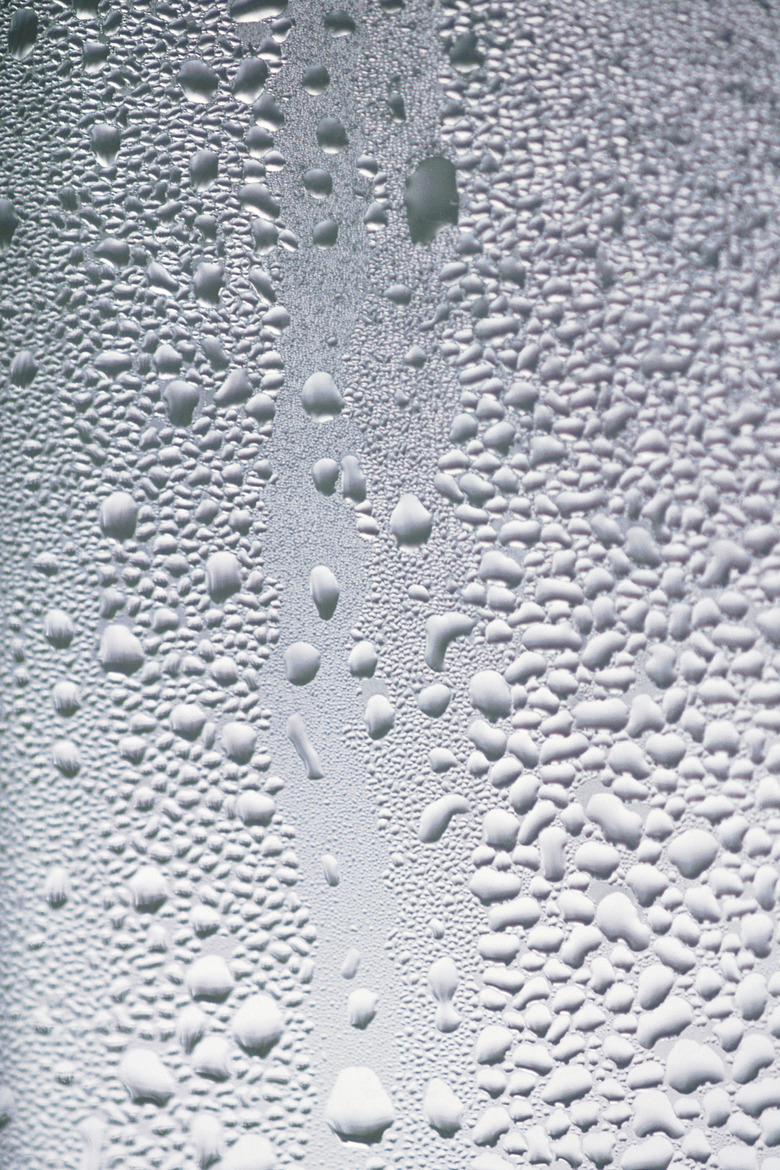Measuring Wet Bulb Temperature
You already know intuitively what humidity means: it's the amount of moisture in the air. But measuring humidity turns out to be a little more difficult than defining it. One way to measure humidity is with the aid of a wet bulb thermometer and a dry bulb thermometer. The temperatures measured by each are called wet and dry bulb temperature, respectively, and by comparing them you can determine the humidity.
Evaporation
Evaporation
When water evaporates it absorbs heat from its surroundings. That's why your body sweats to chill you down; the water evaporating from your skin sucks up heat and helps you cool off. The more humid the air, however, the slower water will tend to evaporate. That's one reason why humid heat can be so uncomfortable — your body sweats to cool down, but the sweat doesn't evaporate as quickly as it usually would.
Wet Bulb Temperature
Wet Bulb Temperature
A thermometer left naked and exposed to the air will measure the ambient temperature. If you wrap the bulb of the thermometer in wet cloth, by contrast, the evaporating water from the wet cloth will cool the thermometer down, and its temperature will be cooler than it would be otherwise. The less moisture in the air, the more rapidly the water on the wet cloth will evaporate, and the cooler the wet bulb temperature will be. The lower the wet bulb temperature compared to the dry bulb temperature, the lower the humidity.
Making a Wet Bulb Thermometer
Making a Wet Bulb Thermometer
You need an absorbent material to soak up water and stay in contact with the tip of your thermometer — preferably made from cotton and with a thicker inner layer coupled to a looser outer layer. An old shoelace or bootlace is ideal; alternatively, you can buy wicks made for this purpose from science supply stores. Whether you buy a wick or use a bootlace, you'll want to place the wick in a vessel, such as a beaker full of water, so that it soaks up the moisture. Then put one end of the wick around the temperature probe on your thermometer. Water will travel up the wick through capillary action, while the tip of the thermometer remains continually moist. The temperature on your thermometer is now the wet-bulb temperature.
Temperature Comparison
Temperature Comparison
Rather than making your own wet bulb, you can also buy a wet bulb hygrometer if you prefer. These are generally designed to give you the humidity and therefore save you the trouble of calculating it after measuring the wet bulb temperature. Regardless of how you measure wet-bulb temperature, however, once you have it you can use it to calculate the relative humidity using the online calculator at the fifth link under the References section.
References
- Engineering Toolbox: Dry Bulb, Wet Bulb and Dew Point Temperature
- University of Wisconsin-Madison Center for Meat Process Validation: Making Your Own Wet Bulb Thermometer
- State of New South Wales, Department of Education and Training: Using a Hygrometer
- Chemical Principles, the Quest for Insight, Fourth Edition, pages 235-236: Peter Atkins and Loretta Jones
- ABC15: Weather Calculators: Relative Humidity & Dew Point
Cite This Article
MLA
Brennan, John. "Measuring Wet Bulb Temperature" sciencing.com, https://www.sciencing.com/measuring-wet-bulb-temperature-7863/. 24 April 2017.
APA
Brennan, John. (2017, April 24). Measuring Wet Bulb Temperature. sciencing.com. Retrieved from https://www.sciencing.com/measuring-wet-bulb-temperature-7863/
Chicago
Brennan, John. Measuring Wet Bulb Temperature last modified March 24, 2022. https://www.sciencing.com/measuring-wet-bulb-temperature-7863/
